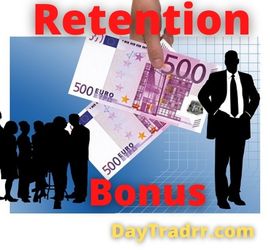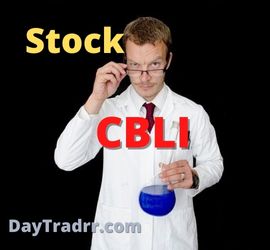What Is an Option Premium?

An option premium is the market price an investor must pay to purchase an options contract from a seller or writer. In other words, it is the amount paid by an option buyer to an option seller for an option contract. An option contract is a type of derivative instrument that gives the buyer the right to purchase (call option) or sell (put option) a group of underlying securities. Typically, an options contract is for 100 shares of a company. The options contract specifies a predetermined price to buy or sell the security on or before the contract’s expiration date.
Consider a premium to be the purchase price of an option contract. It is therefore the profit made by the seller (writer) of an option contract to another party. Option premiums that are in the money are made up of two components: intrinsic and extrinsic value. The premiums on out-of-the-money options are entirely made up of extrinsic value. The premium for stock options is expressed as a dollar amount per share. Most contracts imply a commitment of 100 shares.
Option Premium – A Closer Look
Investors who write or sell call or put options employ option premiums as a source of current income. This is in addition to a larger investing plan to hedge all or a portion of a portfolio. Options themselves have no underlying value. Therefore, option prices stated on an exchange, such as the Chicago Board Options Exchange (CBOE), are often regarded as premiums. An option premium’s components are its intrinsic value, time value, and the implied volatility of the underlying asset. As the option approaches its expiration date, the time value approaches zero. However, the intrinsic value closely represents the difference between the underlying security’s price and the contract’s strike price.
Example
Options are offered in groups of 100 shares with a premium paid for each share. For example, a contract with a $0.12 premium would cost the buyer $12 total, or $0.12 times 100 shares.
Option Premium – Influencing Factors
The underlying security’s price, the useful life of the option, and implied volatility are the major elements influencing the option premium. This price fluctuates as the underlying security’s price changes. The premium of a call option rises as the underlying security’s price rises, whereas the premium of a put option falls. The option premium for a put option increases as the underlying security price decreases, whereas the premium for a call option falls.
The premium of the option is influenced by how distant the underlying security price is from the stated strike price. The premium of an option often rises as it moves deeper into the money. The option premium, on the other hand, falls as the option moves further out of the money. For example, if an option moves further out of the money, the option premium loses intrinsic value. As a result, the value is largely determined by the time value.
The time value element of the option’s premium is affected by the time to expiry, often known as the useful life. As the option approaches its expiration date, the option’s premium is mostly determined by its intrinsic value. For example, deep out-of-the-money options expiring in one trading day would ordinarily be valued close to $0.
Intrinsic value
Intrinsic value refers to the value of an options contract if it were to be exercised immediately. For example, a call option with a strike price of $40 would have an intrinsic value of $5 if the underlying asset was currently trading at $45. This is because the contract buyer could immediately exercise the contract for a $5 profit.
The intrinsic value of an option is the difference between its strike price and its market price. If the strike price of a call option is less than the market price, the option has intrinsic value. If the strike price of a put option is higher than the market price, the option has intrinsic value. When an options contract has an inherent value, it is said to be in the money, and its intrinsic value is reflected in the premium. If an option contract lacks intrinsic value, it is deemed out of the money and its premium is determined largely by its time value and volatility. These values, when combined indicate how likely the contract is to be in the money by the time it expires.
- A call option is in-the-money when the underlying security’s price is higher than the strike price.
- A put option is in-the-money if the underlying security’s price is less than the strike price. Only in-the-money options have intrinsic value. It represents the difference between the current price of the underlying security and the option’s exercise price, or strike price. (Source: optionseducation.org)
Time value
The time value of an option contract is determined by the number of days until the contract expires. The larger the time value of a contract, the longer it has until it expires. When a contract is about to expire, there is little time for the underlying asset’s value to fluctuate. However, when a contract has months until it expires, the underlying asset has plenty of time to shift in value. Aside from other factors, options have greater premiums the farther they are to expiration. It’s also important to understand that time value falls more rapidly as a contract approaches its expiration date. It diminishes exponentially rather than linearly, a phenomenon known as time decay.
Volatility and Option Premium
The degree to which the underlying asset’s price changes on a regular basis is referred to as volatility. This is also known as standard deviation. When all other factors are equal, the higher an asset’s volatility, the higher it’s premium.
Implied volatility is calculated using the option’s price which is fed into an option pricing model. The objective is to predict how volatile a stock’s price will likely be in the future. Furthermore, it has an impact on the extrinsic value element of option premiums. If investors are long options, an increase in implied volatility increases the value of the options. This is because the higher the volatility of the underlying asset, the more likely the option will expire in the money. If implied volatility falls, the reverse is true. Assume an investor holds a long position in one call option with a 20 percent annualized implied volatility. If the implied volatility rises to 50% throughout the option’s term, the call option premium will increase in value. The vega of an option is the change in premium caused by a 1% change in implied volatility.
The Greeks – namely delta, gamma, theta, vega, and rho – are measures of the individual risks associated with trading options. These units can help you calculate the risk involved with each of the variables that affect option prices.
Up Next: What Is a Retention Bonus?
 A retention bonus is a specific payment or reward offered in addition to an employee’s normal compensation. It is given as an incentive to retain a key individual on the job. Often, this occurs during a particularly critical business cycle, such as a merger or acquisition, or during a critical production time. This payment is usually a one-time offering intended to prevent an employee from suddenly quitting their position. Retention incentives have grown in popularity in recent years as corporate poaching escalates.
A retention bonus is a specific payment or reward offered in addition to an employee’s normal compensation. It is given as an incentive to retain a key individual on the job. Often, this occurs during a particularly critical business cycle, such as a merger or acquisition, or during a critical production time. This payment is usually a one-time offering intended to prevent an employee from suddenly quitting their position. Retention incentives have grown in popularity in recent years as corporate poaching escalates.
A retention bonus is also known as a retention package, retention pay, or stay bonus. Generally, it is a one-time lump payment paid to an employee by a company or organization. It is intended to ensure that key employees stay with the firm for a certain period of time. The amount provided as part of a retention incentive package varies. It is often dependent on a percentage of the employee’s income, their job within the firm, and the length of time they will stay. Retention incentives are used by larger firms to keep top personnel and continue to profit from their talent and expertise. During a corporate transition, organizations generally pay retention bonuses to preserve a solid functioning core group. This secures a solid foundation inside the firm and ensures that experienced leadership helps all employees through the transition.




